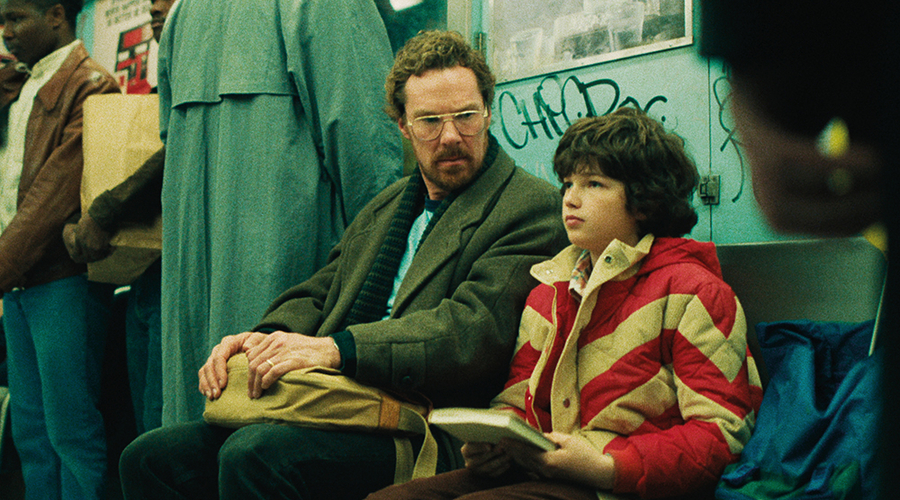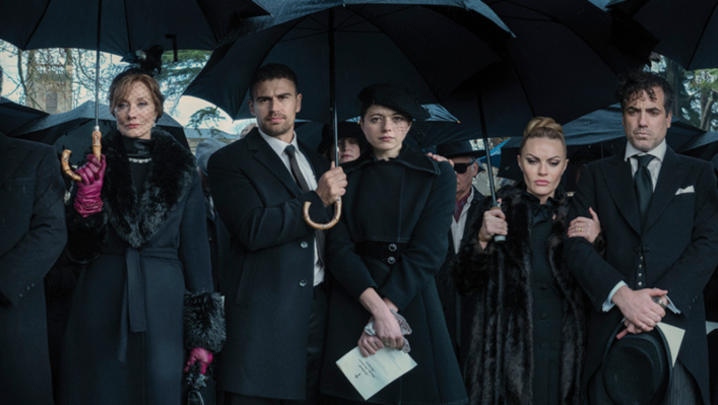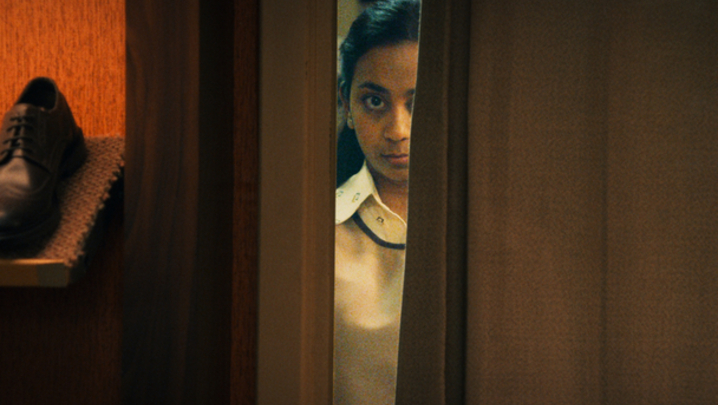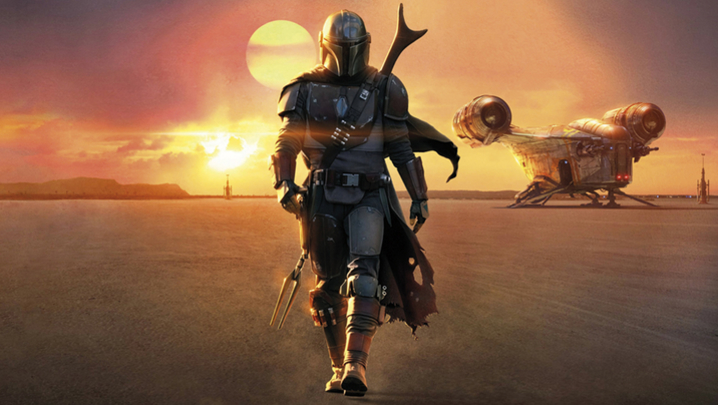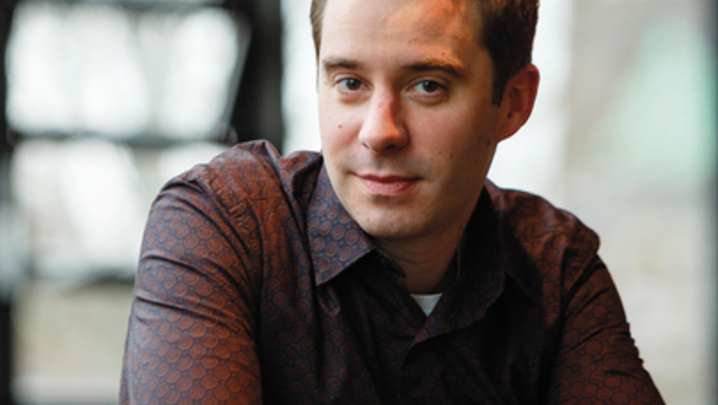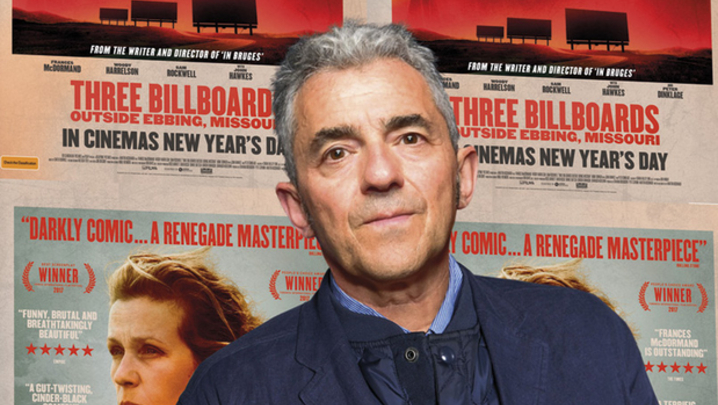Benedict Cumberbatch loses his son and sanity in an authentically created 1980s New York. Matthew Bell reports
At face value, Eric is another cop show, albeit one that features a giant walking puppet. But from the pen of RTS Fellow Abi Morgan – whose award-winning dramas include The Iron Lady, Sex Traffic and The Hour – the six-part Netflix series, which revolves around a missing child, is something entirely different, taking in addiction, childhood trauma, homelessness, Aids, homophobia and racism.
“The missing boy is a Trojan horse,” Morgan tells Television. “We’ve got a cop trying to find him, we’ve got devastated parents.… But, actually, it’s an emotional, domestic story about how a family survives the worst, about a period of cultural change and about a man trying to face the monster in himself.”
That man, played by Benedict Cumberbatch, is Vincent, creator of a once-popular children’s puppet show, Good Day Sunshine, now looking a tad old fashioned. It needs to be more “street”, say the suits at the TV company.
When Vincent’s nine-year-old son, Edgar, disappears, his response alienates his wife and colleagues. He makes a puppet for Good Day Sunshine, based on his son’s drawings, which he hopes will help Edgar come home. As his delusions worsen, the seven-foot puppet, Eric, comes to life, but only to Vincent.
“This puppet is a homage to the child he’s lost,” explains Morgan. “In the making of it, and in his desire to get the puppet on the TV show, Vincent starts to realise the monster is himself. I was dealing with really simple metaphors.”
“The minute Abi started pitching it to me, I was hooked,” Cumberbatch says. “She’s an incredible storyteller and she enticed me into this complex, multifaceted and troubled character’s journey.”
Eric, whom Cumberbatch voices in a deep New York rumble, an exaggeration of Vincent’s timbre, adds a touch of magical realism to what is a resolutely naturalistic drama. “Eric is a mood-shifting entity. He can be everything from the foul-mouth buddy to the thing that can say the things we can’t,” says Cumberbatch.
It is a tribute to the writing, direction and Cumberbatch’s performance that Eric’s appearance doesn’t jar; within a few minutes, it feels entirely normal that Vincent is bickering and sparring with a puppet monster.
“Everything had to be grounded in naturalism because, otherwise, when Eric turns up, it would be ridiculous – he had to belong in this environment,” explains the director, Lucy Forbes, who won an RTS award for the BBC medical drama This Is Going to Hurt.
Forbes, like Morgan and Cumberbatch, is an executive producer on the show, which is made by Jane Featherstone’s production company, Sister.

As you would expect from a stellar British actor, Cumberbatch’s accent as the tormented and self-loathing New Yorker is spot on, and his performance is nuanced. Yes, Vincent has his demons – drink, drugs, toxic relationships and a terrible childhood – but his decency is still discernible, even at his most loathsome and self-destructive.
While Vincent rages, the other principal actors – wife Cassie (Gaby Hoffmann) and Ledroit (McKinley Belcher III), the black, gay cop looking for Edgar – offer restrained but equally intense performances. Both are grieving; Cassie for her missing son and dying marriage; Ledroit for his lover who is dying from Aids, a secret that he keeps from his homophobic police colleagues.
“For me, Gaby Hoffman is the quintessential New York actress – she grew up in the Chelsea Hotel,” says Forbes. “She is also one of my favourite actors in the whole world,” she adds, and raves about Hoffman’s performance with Joaquin Phoenix in C’mon, C’mon.
Morgan says Belcher was an “amazing find… I didn’t know his work because he’d come through theatre primarily; there is a real stillness and command to his performance.”
She adds: “It’s all about actors and getting the alchemy right – the three of them were such an amazing triptych of actors.”
Newcomer Ivan Howe plays the missing nine-year-old Edgar. “Ivan had never auditioned for anything before. He has no stage school tics and has talent beyond his years,” says Forbes.
Morgan is a north Londoner who spent time working as a nanny in New York in the 1980s. She has always been drawn to American culture – Good Day Sunshine is, in part, a homage to Sesame Street, a beloved show from her youth.
“I was fascinated walking through the streets of New York with this kid and seeing the city through the kid’s eyes,” she recalls.
But, as well as the money of Wall Street, smart apartment blocks, diners and glitzy nightclubs, New York also has an “underbelly”, the desperate lives of the homeless or “mole people” living underground.
“I tend to draw on a lot of photographic imagery,” says Morgan, who looked at reams of street photography while writing Eric. “It really chimed with my memories of being in 1980s New York – there was the dirt and the grime and yet also this weird compelling, captivating, tantalising glamour.”
Eric launches on Netflix on 30 May.
Making Eric and his metropolis
Eric is as New York as pastrami on rye, but it was largely shot in Budapest on a New York backlot built for Guillermo del Toro’s 2008 movie Hellboy II.
‘There are lots of beautiful, retro-feeling buildings, which we completely overhauled – the backlot was a crumbling mess when we arrived and had barely been touched for 16 years,’ says director Lucy Forbes, talking to Television from Belgrade, where she is shooting an ad campaign.
The drama’s key locations – the Lux nightclub, Good Day Sunshine studio and the underground world of New York’s homeless ‘mole people’ – were all in Budapest, with the latter recreated in the city’s extensive beer tunnels.

A month’s filming in New York, after four in Budapest, allowed the production to add the missing Big Apple locations.
Eric is set in the mid-1980s, but the look is as much Taxi Driver, the quintessential 1970s New York film. ‘Sometimes, people can go too 1980s. When you go from 1979 to 1980, that 1970s influence doesn’t just go – it doesn’t become all neon and big hair overnight,’ says Forbes, who wanted to ‘bleed the 1970s and 1980s together’ in the series.
Her research focused on photos and documentaries, rather than films, Taxi Driver aside.
‘I feel like I’ve looked at every single photograph taken in 1980s New York,’ she says. A key documentary was Marc Singer’s multi-award-winning Dark Days from 2000, about homeless people living in the city’s train tunnels.
The subterranean hell of the homeless is at one extreme of Eric; the feel-good puppet world of Good Day Sunshine at the other. ‘There was one photograph I found of a subway platform with a big rusty train, covered in graffiti. Inside, there’s a man with these brightly coloured balloons – for me, that was the show. Inside that subway train was Good Day Sunshine and New York is rotting around it,” says Forbes.
Becky Johnson and Paul Vincett from Stitches and Glue, which also created creatures for Stranger Things and The Last of Us, designed and built the puppets and the life-size Eric, who was operated by Olly Taylor.
Raymond Carr, an expert in Muppetstyle puppetry, taught the actors how to operate the puppets in best 1980s fashion.
‘The puppet side was probably the most creatively challenging thing I’ve ever done, working out what the show was and how it looked,’ says Forbes. ‘And I am a child of the 1980s, so it was wildly exciting – I loved it.’

